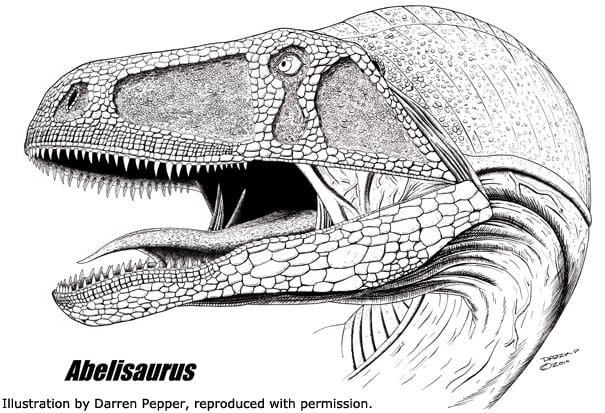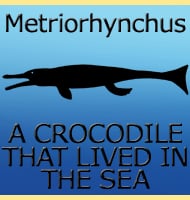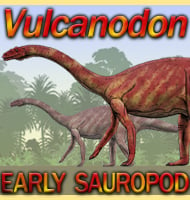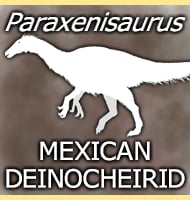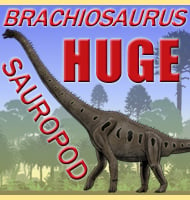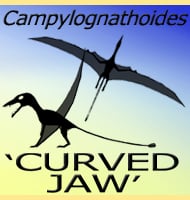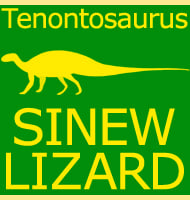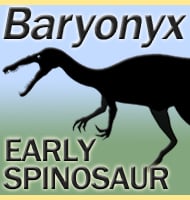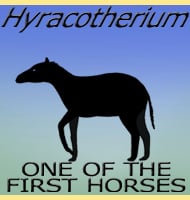Abelisaurus Fossil Map
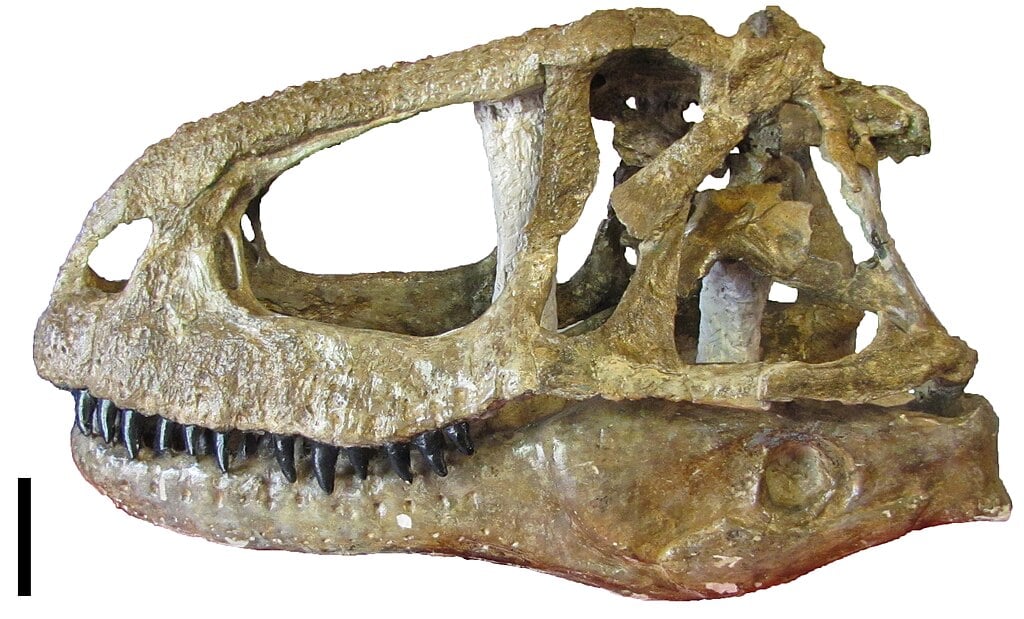
Interactive fossil Map of Abelisaurus, along with its chronological bar chart of fossil discoveries.
In Depth

Named after Roberto Abel, the palaeontologist who first discovered the remains, Abelisaurus was the first of the Abelisauridae group of carnivorous theropod dinosaurs, a relatively new group that seems to have been most common across southern continents such as South America and Africa.
Unfortunately the only fossil of Abelisaurus so far known is a skull that has extensive damage upon the right hand side.
Although the skull has no clear signs of ornamentation, rough ridges of bone above the eyes and down the snout may have supported crests made from keratin, however keratin does not normally fossilise so it is impossible to say what shapes these crests were or even if they were present at all.
Full body reconstructions of Abelisaurus have had to be based upon other abelisaurid dinosaurs, which since the early discoveries towards the ends of the twentieth century have been steadily growing more and more common.

Abelisaurus is envisioned as being a medium to large theropod dinosaur and as such was bipedal. If like other abelisaurids,
Abelisaurus would have had exceptionally small and underdeveloped arms compared to other theropod groups, even the tyrannosaurs which are often noted as having small arms probably got more use from theirs than the abelisaurids had.
Comparison to skull features of other abelisaurids however has since indicated that Abelisaurus is actually a primitive (basal) member of the group.
Other popular abelisaurids include the exceptionally well preserved Aucasurus, the horned Carnotaurus and the possibly cannibalistic Majungasaurus.
Further reading
- Abelisaurus comahuensis, n.g., n.sp., Carnosauria del Crétacico Tardio de Patagonia (Abelisaurus comahuensis, n.gen., n.sp., Carnosauria from the Late Cretaceous of Patagonia) – J. F. Bonaparte and F. E. Novas – Ameghiniana 21(2-4):259-265 – 1985.
